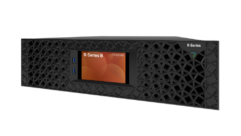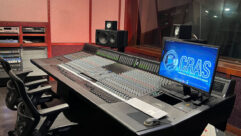
Coming Home to Windows Home Server Part 32
Oct 4, 2010 10:14 AM,
By Eric B. Rux
The Veil has Been Lifted on Windows Home Server Vail

Figure 1. The Home tab of the new Vail Dashboard shows a listing of Getting Started Tasks, such as setting up the server backup, remote web access, file sharing, and streaming media. See a larger image.
Windows Home Server has been a huge success. When I first started writing about this product nearly three years ago, nobody I talked to knew what it was or what it could do. Now, I speak to people every week that not only know about it, they bend my ear for more tidbits of information on how they can use it to its full potential. It is pretty exciting, to say the least.
This excitement is just the beginning, though. Microsoft has another trick up its sleeve: Windows Home Server v2, code name “Vail”. Version 2 of Windows Home Server has been in development for some time, and became a public beta this past spring. I have resisted writing about what was once an immature product and even possibly contributing to the Osborne Effect, but now I feel that it’s time we look to the future of Windows Home Server and set our sights on Vail.
Related Links

Coming Home to Windows Home Server Series
Welcome Home! In this series, Eric B. Rux—Windows Home Server MVP—breaks down the Windows Home Server (WHS) with useful tips, new add-ins, problems solvers, and the latest news. …
Let us begin from the ground up. For starters, Vail is built on Microsoft’s newest generation of server, 2008 R2. WHS v1 was built on Windows Server 2003, which is pushing 10 years old, so moving to a newer base operating system was the obvious choice.
Microsoft stuck with the popular, slimmed-down administrative tool that can remotely configure your Home Server. This WHS tool was called the Console in version 1, but that led to some confusion as the regular desktop is also referred to as a console in Microsoft speak. Microsoft doesn’t want the average home-user to log onto the desktop console of the Home Server. Instead, the company wants the user to use the Home Server Console tool.
The confusion led us (Microsoft MVPs to bring this up to Microsoft in the early development process (about 18 months ago). The tool has now been renamed to “the Dashboard”, which makes a whole lot more sense.(Thank you, Microsoft, for listening to us.) Use the Dashboard to do the day-to-day administration of the Home Server, and only use the computer console for more advanced administrative functions (and only if you really, really know what you are doing).
The Dashboard for Vail is very similar to the original version of Home Server, and you will feel right at home. Figure 1 shows the Home tab of the new Dashboard with a listing of Getting Started Tasks, such as setting up the server backup, remote web access, file sharing, and streaming media. This one-stop shopping should make it easier for the new Home Server user to get the most out of their Home Server investment.
A quick tour of the actual server reveals some interesting changes as well. For example, instead of using folders to separate documents, pictures and movies, etc., each of these locations are now individual logical drives. This is an effect of moving to a new Drive Extender technology. Microsoft learned some lessons from the first generation, and it will be interesting to dive into the improvements and learn how this new technology works. According to Microsoft, Vail has been tested with 16, 1TB hard drives using the new Drive Extender. Nice.
There are cool, new features, and some improved old ones that we’re going to discuss in detail in future editions of this column. Here are a few of them:
- Hardware requirements and installation
- Dashboard/Launchpad
- Server backup
- Remote web access
- File/folder sharing
- Storage/drive extender technology
- Media sharing
- Video streaming
- Users and user management
- Computers and computer backup management
- Add-ins
- Home group
- Apple (Mac) support
- Health and alerts
That’s quite a list of topics to cover. I can’t wait to get started.
When can we expect to see Vail come preinstalled on an HP MediaSmart server, or an OEM DVD at our favorite online outlet? That, my friend, is still top secret. I spoke with my contact at Microsoft last week, and his lips were sealed. He wouldn’t even give me a “We?fre shooting for quarter x” guestimate. However, based on previous development cycles and the perceived maturity of the latest build, I would venture a guess that we’re only a few months away (But that’s only a guess. I really have no idea).
WHS v1 was great. WHS v2 is going to be even better. It should be interesting to see what this new product has to offer. Buckle up; it’s going to be a fun ride.
Eric B. Rux is a contributing editor for Windows IT Pro, co-founder of WHSHelp.com, and writes a periodic column for Residential AV Presents Connected Home. Eric is a senior Windows administrator and teaches the Microsoft Certified Systems Administrator (MCSA) program at a technical college.










